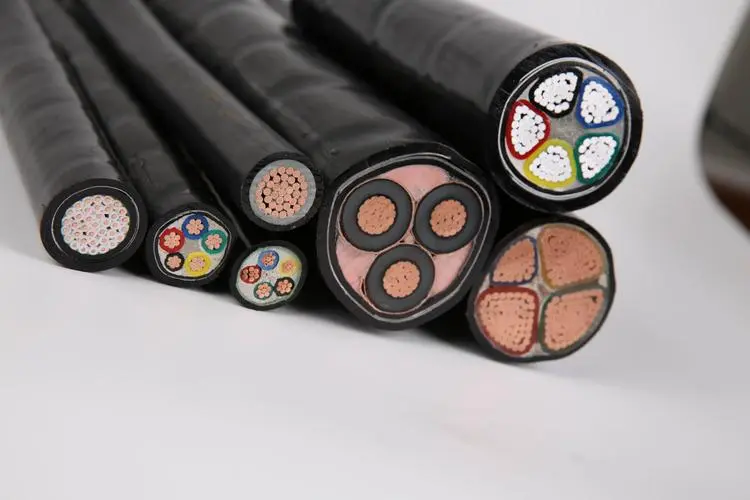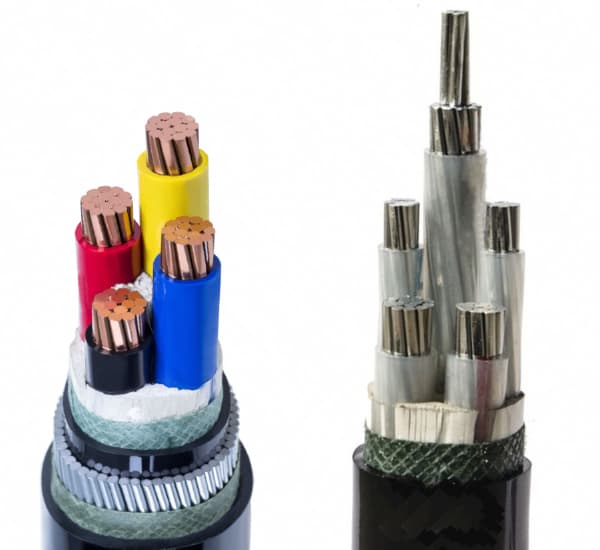
Cable XLPE vs Cable PVC, In the world of electrical wiring, Choosing the right insulation material is crucial to ensure safety, reliability and longevity. Two of the most used insulation materials in cables are cross-linked polyethylene. (XLPE) and polyvinyl chloride (PVC). Each has its own set of benefits and applications, So it is essential to understand the differences between XLPE cables and PVC cables before making a selection.. This article delves into the complexities of XLPE insulation, construction of cables with XLPE and PVC, and performance comparison between XLPE SWA cables (armored with steel wire) and PVC cables, highlighting the key factors that influence its suitability for various electrical projects.
Introduction to XLPE insulation
The XLPE, cross-linked polyethylene, is a thermoplastic polymer that undergoes a chemical process called cross-linking to improve its physical and electrical properties. This process creates a strong insulation material, Durable and heat resistant ideal for high voltage and high temperature applications. XLPE insulation offers several advantages over traditional insulation materials, between them:
Excellent electrical insulation: XLPE has a high dielectric strength, meaning it can withstand high voltage levels without breaking, making it suitable for use in power transmission and distribution cables.
Thermal stability: Its reticulated structure gives XLPE excellent thermal stability, which allows it to maintain its properties even at elevated temperatures. This makes XLPE cables ideal for underground installations where heat dissipation is a challenge..
Aging resistance: The cross-linking process also improves XLPE's resistance to aging., to chemical attack and environmental stress, which extends the life of the cable.
Light and flexible: despite his resistance, XLPE insulation remains lightweight and flexible, making installation and maintenance easier.
PVC insulation: the traditional option
polyvinyl chloride (PVC) has been a staple in the cable industry for decades due to its low cost, ease of processing and good electrical insulation properties. PVC insulation offers the following advantages:
Cost-benefit ratio: PVC is one of the most affordable insulation materials, making PVC cables an economical option for projects on tight budgets.
Flame retardant: PVC can be formulated to be flame retardant, which adds an extra layer of safety in the event of a fire.
Chemical resistance: PVC has good resistance to a wide range of chemicals, making it suitable for use in various environments.
Easy to process: PVC is easy to extrude and shape, which simplifies the manufacturing process and reduces production costs.
Comparison of XLPE cables and PVC cables
Electrical performance
Voltage rating: XLPE cables can withstand higher voltage ratings than PVC cables due to their superior dielectric strength. This makes XLPE cables the preferred choice for medium and high voltage power transmission and distribution systems..
Temperature resistance: XLPE insulation has a higher temperature rating, usually up to 90 °C for continuous operation and 130 °C for short periods. The PVC, on the other hand, has a lower temperature limit, usually around 70 °C for continuous use.
Durability and longevity
Aging resistance: Cross-linked XLPE structure provides superior aging resistance, to environmental stress and chemical attack, resulting in longer cable life compared to PVC.
Mechanical strength: although both materials offer good mechanical resistance, XLPE cables tend to be more resistant to abrasion and crushing, making them more suitable for demanding applications such as underground installations.
Instalation and maintenance
Flexibility: Both XLPE and PVC cables are flexible, making it easier to install in tight spaces and on curves. However, XLPE's greater temperature tolerance can sometimes make it easier to handle during installation, especially in hot climates.
Weight: XLPE cables are generally lighter than PVC cables of the same size, making them easier to transport and install.
Environmental impact
Sustainability: PVC has been the subject of environmental concerns due to its potential to release harmful chemicals during production, use and disposal. Although advances in PVC manufacturing have reduced these risks, XLPE is often considered a greener option due to its superior durability and reduced need for replacement.
XLPE SWA Cables vs PVC Cables
Cable XLPE vs Cable PVC, When considering shielded cables, XLPE SWA cables (armored with steel wire) offer several advantages over PVC insulated shielded cables:
Greater resistance and protection: The steel wire armor of XLPE SWA cables provides excellent mechanical protection against crushing, rodent impact and damage, making them ideal for outdoor and underground installations.
Electrical performance: As mentioned earlier, the superior electrical properties of XLPE insulation, including higher voltage ratings and temperature tolerance, make XLPE SWA cables more resistant to impacts and rodent damage.

